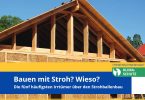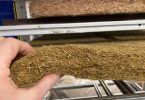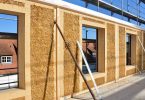Although it makes the actors of traditional construction smile a lot, the straw is coming back in force and it is not to displease the planet! This material, available at low cost in the majority of our regions, offers under-exploited ecological potential. As usual, let’s take a closer look at what straw brings to eco-construction, what are its advantages and disadvantages… What is straw in construction? A plant residue Wheat field Before being bundled, straw is a plant, the stalk of certain grasses, known as straw cereals, cut and stripped of their grain during harvest. Straw can be made from wheat, wheat, rye, sorghum, barley or triticale. Straw can also be made from the stalks of hemp, lavender or rice, but it will be necessary to find the crops and above all the machines that will calibrate the bales to the right size.
Bien que cela fasse beaucoup sourire les acteurs de la construction traditionnelle, la paille revient en force et ce n’est pas pour déplaire à la planète ! Ce matériau, disponible à faible coût dans la majorité de nos régions offre des potentialités écologiques sous-exploitées. Comme à notre habitude, regardons d’un peu plus près ce que la paille apporte dans l’éco-construction, quels sont ses avantages et inconvénients… Qu’est-ce que la paille en construction ? Un résidu végétal Champ de blé Avant d’être mise en botte, la paille est un végétal, la tige de certaines graminées, dites céréales à paille, coupées et dépouillées de leur grain pendant la moisson. La paille peut être issue du blé, du froment, du seigle, du sorgho, de l’orge ou du triticale. On peut aussi faire de la paille avec la tige du chanvre, de la lavande ou du riz, mais il faudra trouver les productions et surtout les machines qui calibreront les bottes à la bonne taille.
Author: Pascal Faucompré
Link: https://www.build-green.fr/paille-la-solution-ecologique-ultime/






